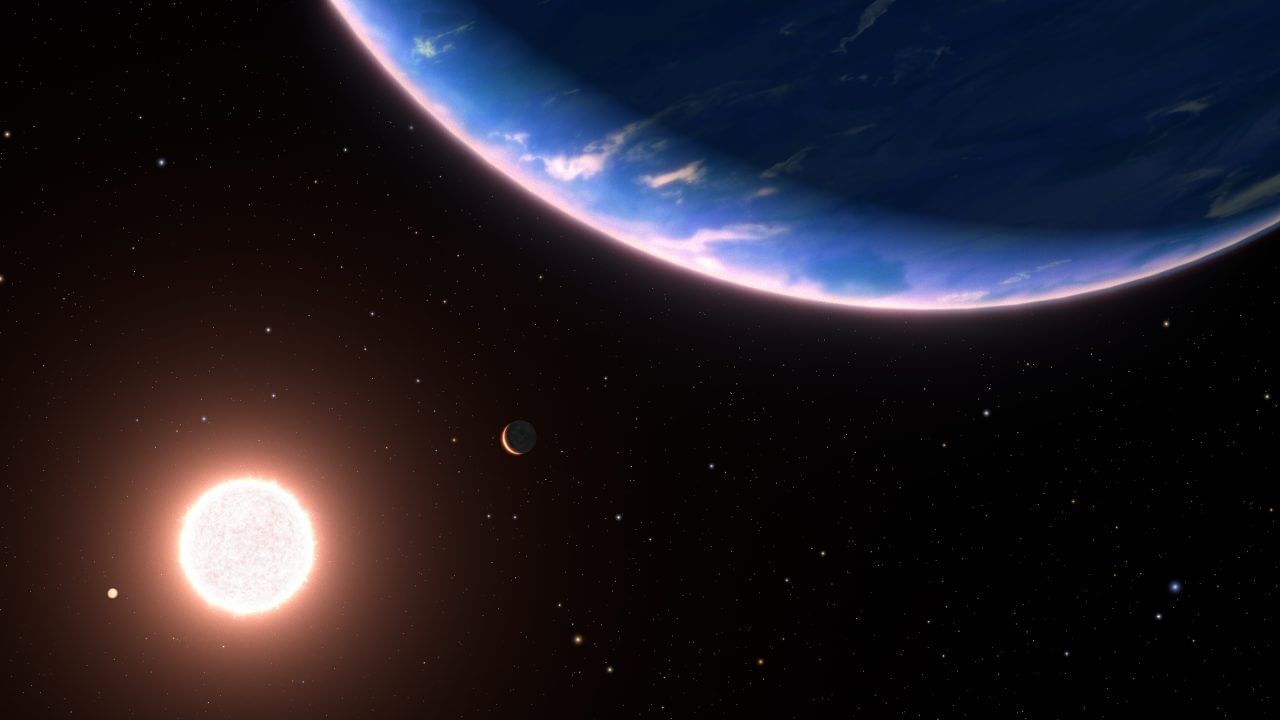A research team led by Pierre-Alexis Roy of the University of Montreal studied water vapor present in the atmosphere of the exoplanet GJ 9827 d, which was discovered approximately 97 light-years away in the constellation Pisces, and we announced the results of our research that we had discovered this.
According to the research team, GJ 9827 d has a diameter of about 1.96 times and a mass of about 3.4 times the mass of Earth, and it orbits its host star GJ 9827 with a period of about 6.2 days. Because its orbit is close to its host star, its surface temperature is estimated at about 425 degrees Celsius, that is, close to the planet Venus. The main star, GJ 9827, is a K-type star with a diameter and mass of about 0.6 times that of the Sun, and a surface temperature of about 4030°C. “In addition to GJ 9827 d, it is also home to two exoplanets, GJ 9827 b and GJ 9827 c.”

To investigate the composition of GJ 9827 d's atmosphere, the research team used the Hubble Space Telescope's (HST) Wide Field Camera 3 (WFC3) to find GJ 9827 d in the foreground as seen from Earth. We observed GJ 9827 during its “transit” across Earth (11 times from December 2017 to December 2020). If GJ 9827 d has an atmosphere, the light from GJ 9827 during the transit includes light that passed through GJ 9827 d's atmosphere, so spectroscopic observation is not possible.(※)By doing so, we can verify the composition of GJ 9827 d's atmosphere.
*…an observation method that obtains a spectrum that shows the strength of each wavelength of electromagnetic waves. In the spectrum, dark lines called absorption lines occur when atoms and molecules absorb electromagnetic waves of specific wavelengths, and bright lines called emission lines occur when they emit electromagnetic waves of specific wavelengths. Absorption lines and emission lines are collectively called “spectral lines.” By performing spectroscopic observations, it is possible to verify the chemical composition of celestial bodies and determine the speed of movement in the line of sight based on the degree of deviation of the spectral lines.


As a result of analyzing the transmission spectrum of GJ 9827 d (the spectrum of light from the host star that reaches the planet after passing through the planet's atmosphere) obtained through observation, the research team found an absorption characteristic at a wavelength of 1.4 micrometers, which prompted the research team to Believing that water vapor concluded that it had been discovered. Even if there were clouds in GJ 9827 d's atmosphere, they would be at a low altitude, and the Hubble Space Telescope is said to be able to detect water vapor above the clouds. According to the research team, GJ 9827 d is the smallest exoplanet with water vapor in its atmosphere ever detected.
However, there is still no conclusion on what percentage of the entire atmosphere of water vapor makes up the atmosphere of GJ 9827 d. Alternatively, there are two possibilities: “If there is an atmosphere whose main component is water vapor remaining after it is lost.” The primordial atmosphere composed of hydrogen and helium.
In the first case, GJ 9827 d would be a type of planet called a mini-Neptune or sub-Neptune. In the latter case, the Hubble Space Telescope, which operates the Hubble Space Telescope, said it could be a planet with a small rocky body surrounded by a large amount of water vapor, with a ratio of approximately half water and half rock, like planet Earth. The solar system's icy moons are described by the Space Telescope Science Institute (STScI) as “a warmer version of Jupiter's moon Europa.” Roy, the study's lead author, commented that both cases would be interesting.
Because of its relatively low mass and close orbit to its star GJ 9827, it is estimated that GJ 9827 d loses matter equivalent to more than half the Earth's mass every billion years. Since GJ 9827 d is thought to have formed about 6 billion years ago, it is unlikely that it still retains an expanded atmosphere of hydrogen or helium, which would make it an ocean planet with an atmosphere rich in water vapor. The research team believes that assuming that planet is a world Watery (a planet whose surface is covered with a thick layer of water) could better explain observational data from the Hubble Space Telescope and Earth.
In addition, as GJ 9827 d has become an important observing target for the James Webb Space Telescope (JWST), the nature of GJ 9827 d as a potential oceanic planet has been confirmed, and researchers hope that an atmosphere composed mainly of water vapor has been directly detected. It was revealed for the first time.The paper summarizing the research team's findings isAstrophysical Journal LettersPublished in.
source
- STScI – NASA's Hubble Telescope discovered water vapor in the atmosphere of a small exoplanet
- ESA/Hubble – Hubble found water vapor in the atmosphere of a small exoplanet
- Roy et al. – Water absorption in the transmission spectrum of the water world filter GJ 9827 d (The Astrophysical Journal Letters)
Text Editing/Syrian Studies Department

“Travel maven. Beer expert. Subtly charming alcohol fan. Internet junkie. Avid bacon scholar.”





More Stories
It's better to call it a digital camera. The Xperia 1 VI lets you take any kind of photo | Gizmodo Japan
Google may be developing a new device called “Google TV Streamer” to replace “Chromecast”
What do you want to talk about? “Persona 3 Reload” recommendation campaign is running until July 31st! |.Persona Channel